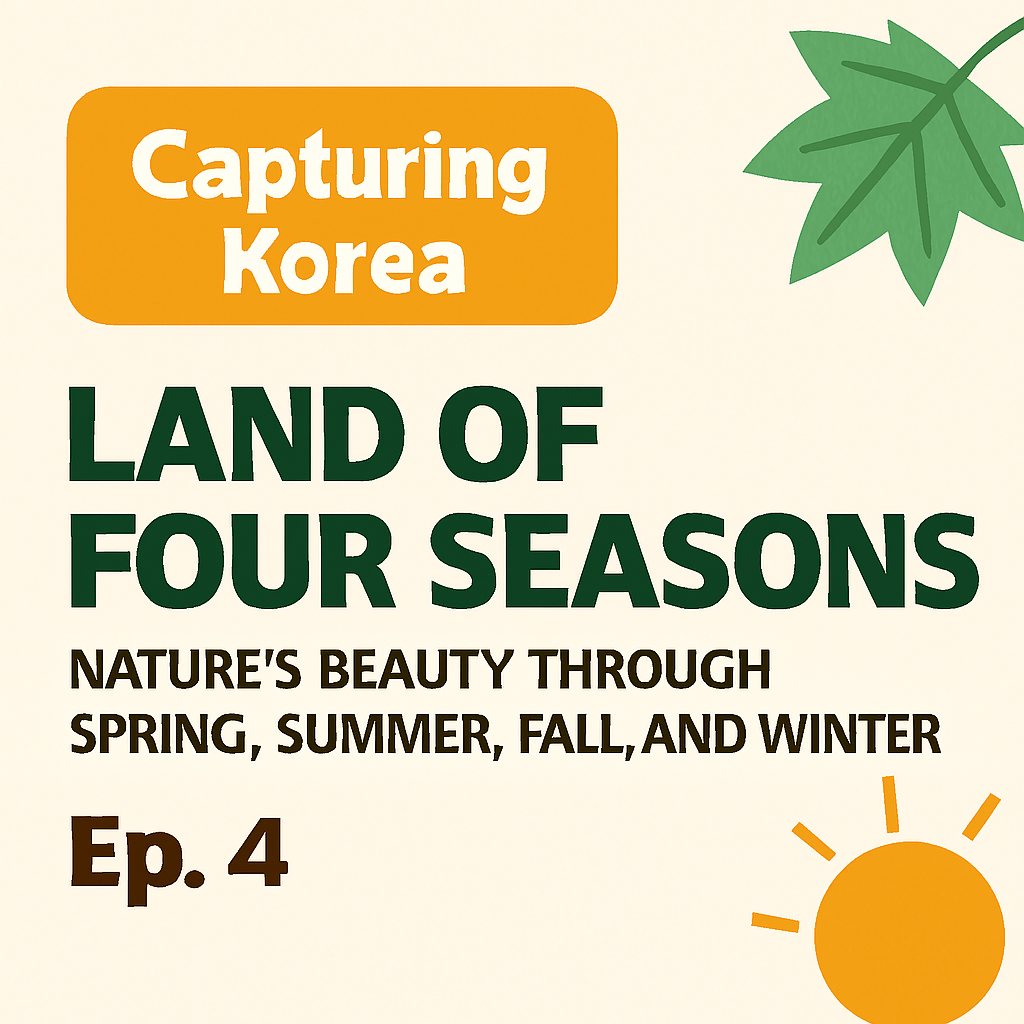
Land of Four Seasons: Nature’s Beauty Through Spring, Summer, Fall, and Winter
South Korea is a country that truly lives through its seasons. Each one arrives not just with a change in weather, but with a shift in mood, color, and rhythm. From cherry blossoms to snow-covered temples, Korea’s four distinct seasons shape the way people eat, dress, celebrate, and connect.
Spring: A Gentle Awakening
As winter recedes, Korea blooms into life. Cherry blossoms line the streets, mountains blush with azaleas, and festivals fill the air with music and laughter. Spring is a time of renewal—students begin new school years, couples stroll under pink canopies, and the nation collectively exhales after months of cold. Seasonal dishes like “naengmyeon” (cold noodles) and fresh greens return to tables, echoing the freshness of the air.
📎 Source: Korea Tourism Organization – Spring Festivals

Summer: Vibrant and Alive
Summer in Korea is hot, humid, and full of energy. Beaches in Busan and Jeju overflow with visitors, while city dwellers seek shade in cafes and parks. The sound of cicadas becomes a soundtrack to daily life. It’s also monsoon season, bringing dramatic rains that cleanse the streets and cool the heat. Koreans turn to “samgyetang” (ginseng chicken soup) to restore energy, embracing the philosophy of fighting heat with heat.
📎 Source: Korea.net – Korean Summer Foods
Autumn: Golden Tranquility
Arguably Korea’s most beloved season, autumn paints the country in gold and crimson. Mountains like Seoraksan and Naejangsan become living canvases, drawing hikers and photographers alike. The air turns crisp, the skies deepen in blue, and the mood becomes reflective. Chuseok, Korea’s harvest festival, brings families together to honor ancestors and share traditional foods like “songpyeon” (rice cakes). It’s a season of gratitude and quiet joy.
📎 Source: Korea Tourism Organization – Autumn Foliage

Winter: Silent Majesty
Winter wraps Korea in a serene hush. Snow blankets palaces, temples, and rooftops, transforming cities into storybook scenes. Ski resorts in Gangwon-do buzz with activity, while urban centers sparkle with holiday lights. It’s a time for hot “tteokguk” (rice cake soup), cozy layers, and introspection. Despite the chill, winter in Korea feels warm—thanks to the culture of togetherness and the comfort of shared meals.
📎 Source: Korea.net – Korean Winter Traditions
More Than Weather
Korea’s seasons are more than meteorological shifts—they’re emotional landscapes. They influence art, music, fashion, and even the way people express affection. A spring confession, a summer adventure, an autumn farewell, a winter reunion—each moment is colored by the season in which it unfolds.
📎 Source: KOCIS – Korean Seasonal Culture
Coming Up Next
Episode 5 — Markets: Where Life Flows
We’ll explore the vibrant world of Korea’s traditional markets, where food, stories, and community come together in the most delicious ways.
Feel free to leave a comment or share your favorite Korean season.
See you in the next chapter 💙
'Korea' 카테고리의 다른 글
| Why Is K-pop So Popular Worldwide? A Cultural and Economic Perspective (0) | 2025.10.01 |
|---|---|
| A Cultural Journey Through Korea: 5 Must-See Festivals This Fall (0) | 2025.09.29 |
| Cap Kor Ep. 3 – Kimchi: Fermented Affection (0) | 2025.09.28 |
| Cap Kor Episode 1: Hangeul — Language of Care (0) | 2025.09.26 |
| Capturing Korea — Series Introduction (0) | 2025.09.26 |



